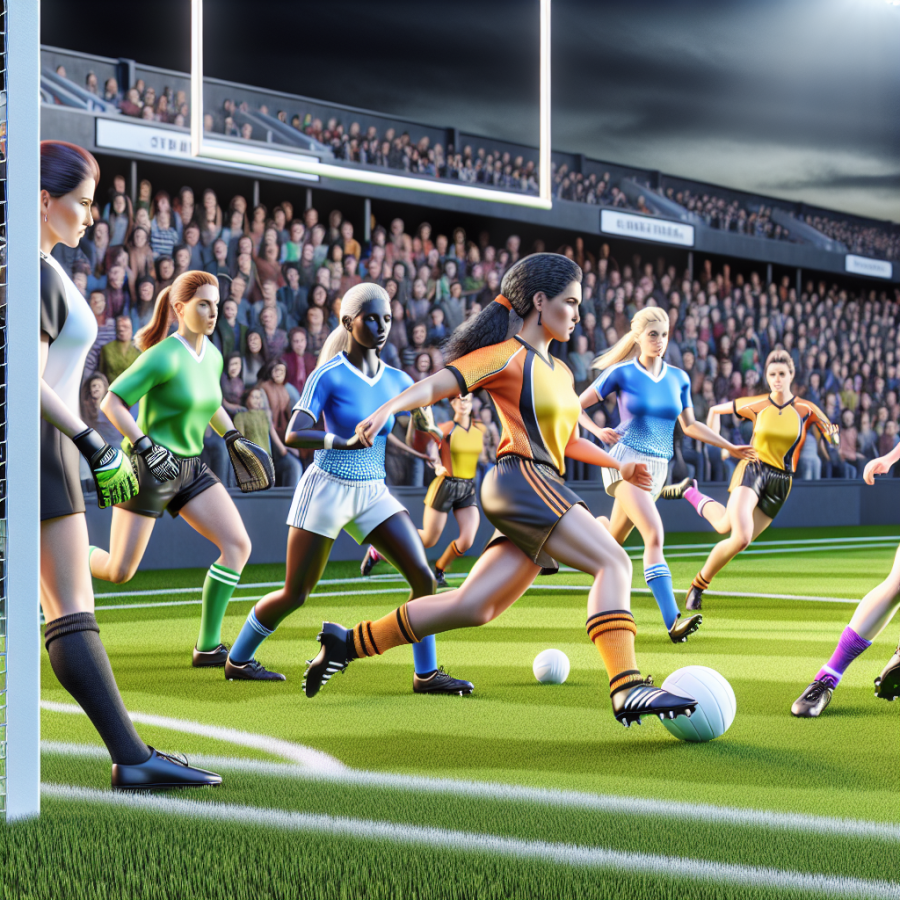Celebrating Female Athletes: How Ladies' Gaelic Football Became a Symbol of Empowerment and Identity
The narrative of Ladies' Gaelic Football interweaves the essence of sport and empowerment, standing as a testament to the enduring spirit and identity of women in athletics. This cultural phenomenon has ascended beyond the boundaries of a mere game, to embody the aspirations and achievements of female athletes in Ireland and beyond.
The game of Ladies' Gaelic Football has undergone a remarkable evolution since its inception. What began as an informal gathering of women passionately participating in a game dominated by their male counterparts has burgeoned into an exemplary model of gender equity in sports. Over the years, women have not only fought for their right to play but have also advocated for equal visibility, support, and opportunity in the athletic domain.
Ladies' Gaelic football, particularly, serves as a vehicle for women to express their athletic prowess and competitive spirit. The intensity and dynamism of the game have attracted a growing base of players and enthusiasts alike. In schools and communities across Ireland, it's much more than a pastime; it celebrates the strength and skill of women, giving them a platform to showcase their talents.
Notably, the sport has become deeply ingrained in the identity of Irish women. From young girls idolizing star players to seasoned athletes representing their parishes and counties, the game instills a profound sense of pride and belonging. The support structures around the teams, often powered by family, community, and local businesses, accentuate this intangible bond, as they rally around their own, forging camaraderie and togetherness.
Indeed, the rise of Ladies' Gaelic Football has mirrored societal transformations, reflecting a broader movement towards gender equality. The Ladies Gaelic Football Association (LGFA), established in 1974, has played a pivotal role in this ascension. Their dedicated work in promoting, developing, and supporting the sport has led to progressive change, not just within the domain of Gaelic games but also in the cultural perception of women in sport.
Female Gaelic footballers have become role models for aspiring young athletes, symbolizing the possibilities that lie ahead. Whether it's sportswomen who balance professional careers alongside their athletic pursuits or the stars who grace the field solely with their sporting endeavors, these ladies embody a diverse and inspiring range of pathways for success.
Additionally, the representation and media coverage of Ladies' Gaelic Football have begun to shift, with more games broadcasted live and increased reporting in news outlets.
Read also:
Mastering the Strategic Depths of Chinese Checkers
Tracing the Evolution of Ladies' Gaelic Football: From Grassroots Movements to National Spotlight
The story of Ladies' Gaelic football is one of resilience, community, and the triumph of passion for the sport. This journey from grassroots movements to national spotlight is not just about the game itself but about the people who fought to give it the recognition it deserves.
From the earliest days, Ladies' Gaelic football faced numerous challenges. With roots in informal matches played in parishes and schools, teams often found themselves without proper pitches, facing the difficulty of acquiring jerseys, and even struggling to gain acceptance from their male counterparts. Despite these obstacles, the love for the game continued to grow, with women across Ireland forming their own improvised teams and leagues.
As the years progressed, the determination of these athletes and supporters began to pay off. The formation of the Ladies' Gaelic Football Association (LGFA) in 1974 marked a pivotal point, providing a structured organization that could advocate for the sport's development. Still, it would take time for the LGFA to establish the same presence and support as seen in men's Gaelic football.
Community support was essential in the evolution of the sport. Amateur clubs became the lifeblood of Ladies' Gaelic football, with local volunteers dedicating countless hours to coaching, organizing, and promoting the sport. Fundraisers and community events often supported teams, providing the financial means needed to sustain their growth.
The effort to professionalize and popularize Ladies' Gaelic football has seen transformative changes in recent years. Increased media coverage has helped raise the profile of the sport, with major broadcasters now showing championship matches and creating a surge of public interest. This visibility has been nurtured further through social media, where players and teams can reach a global audience with the click of a button.
Sponsorship deals and corporate backing have begun to flow in as the commercial potential of Ladies' Gaelic football is recognized. These sponsorships have helped to provide teams with better training equipment, professional coaching, and travel opportunities for inter-county competitions. Moreover, they have enabled the LGFA to run more ambitious marketing campaigns and grow the fanbase even further.
Perhaps one of the most significant indicators of the sport's rise in popularity is the increasing attendance at the annual All-Ireland Ladies' Senior Football Championship final held in Croke Park. Record-breaking crowds are not just numbers; they represent a shifting cultural landscape where women's sports are celebrated and given equal reverence as men's.




